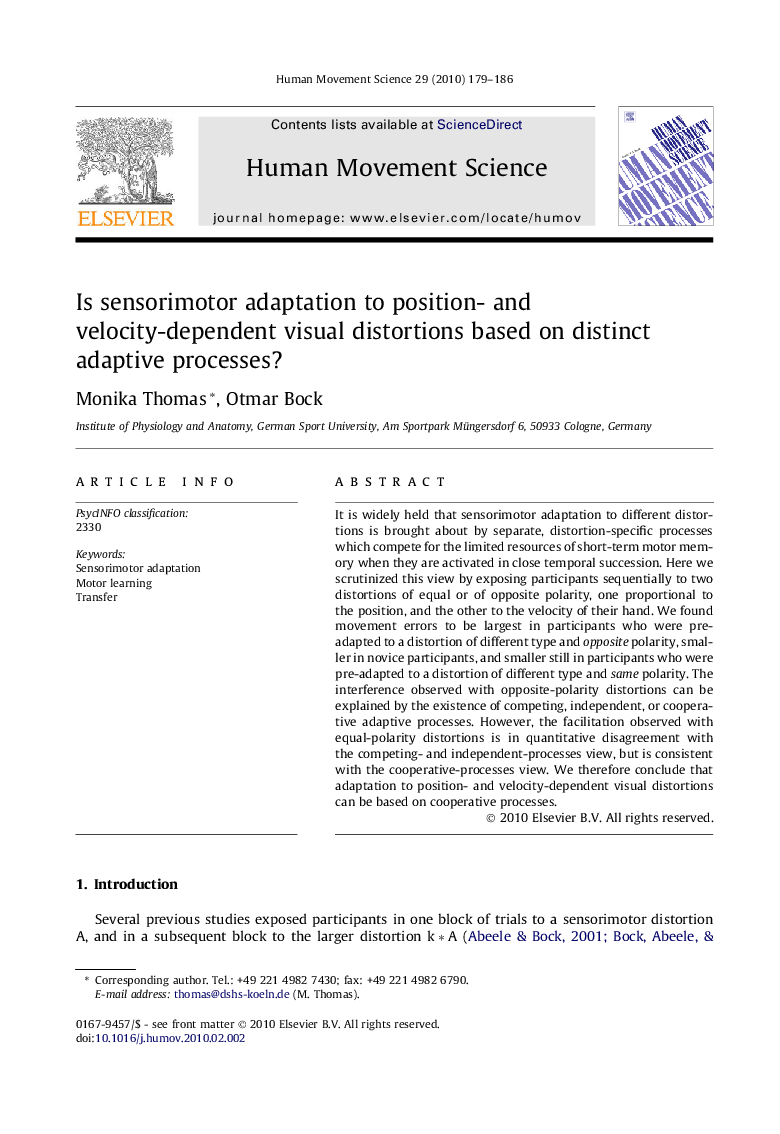| Article ID | Journal | Published Year | Pages | File Type |
|---|---|---|---|---|
| 928724 | Human Movement Science | 2010 | 8 Pages |
It is widely held that sensorimotor adaptation to different distortions is brought about by separate, distortion-specific processes which compete for the limited resources of short-term motor memory when they are activated in close temporal succession. Here we scrutinized this view by exposing participants sequentially to two distortions of equal or of opposite polarity, one proportional to the position, and the other to the velocity of their hand. We found movement errors to be largest in participants who were pre-adapted to a distortion of different type and opposite polarity, smaller in novice participants, and smaller still in participants who were pre-adapted to a distortion of different type and same polarity. The interference observed with opposite-polarity distortions can be explained by the existence of competing, independent, or cooperative adaptive processes. However, the facilitation observed with equal-polarity distortions is in quantitative disagreement with the competing- and independent-processes view, but is consistent with the cooperative-processes view. We therefore conclude that adaptation to position- and velocity-dependent visual distortions can be based on cooperative processes.
